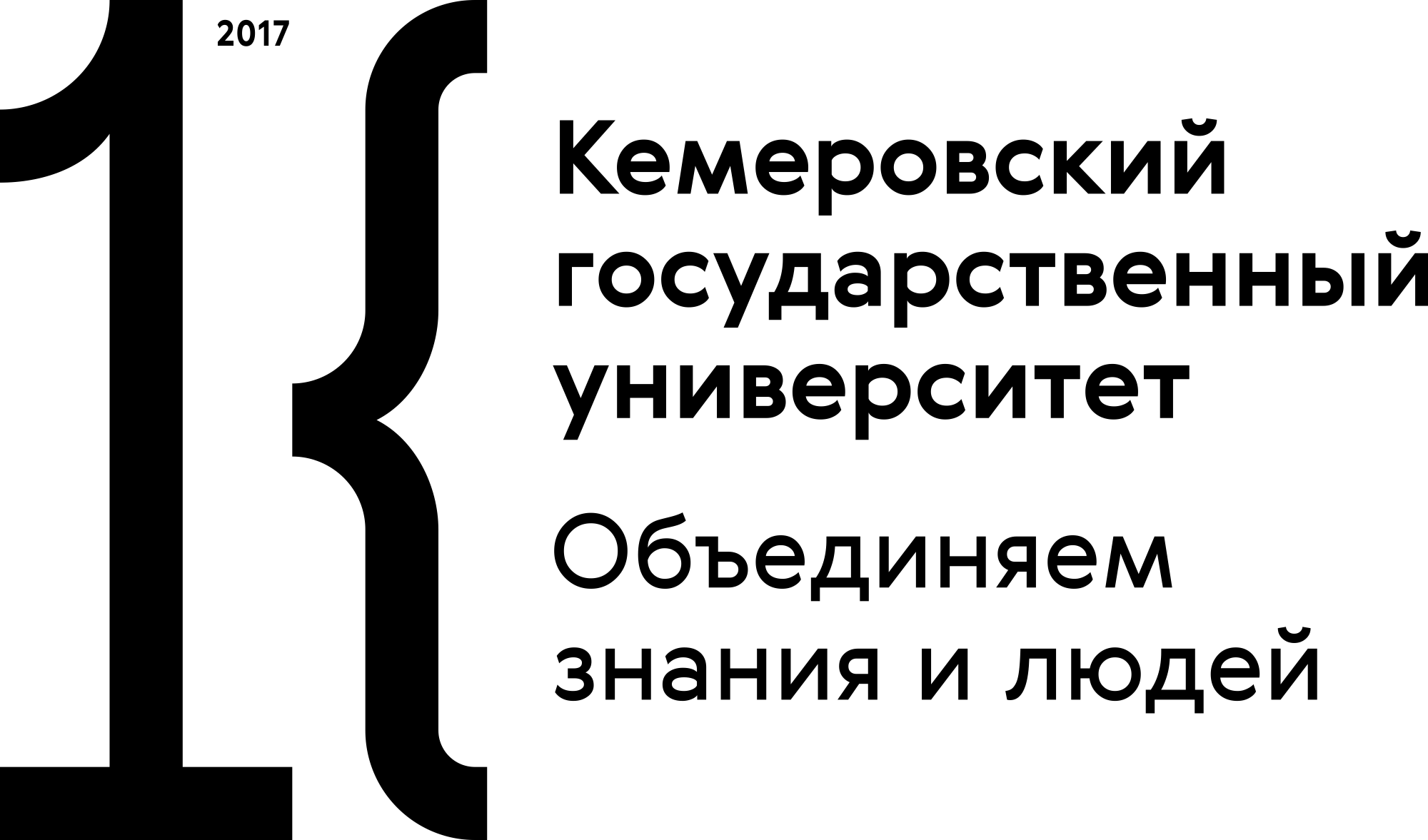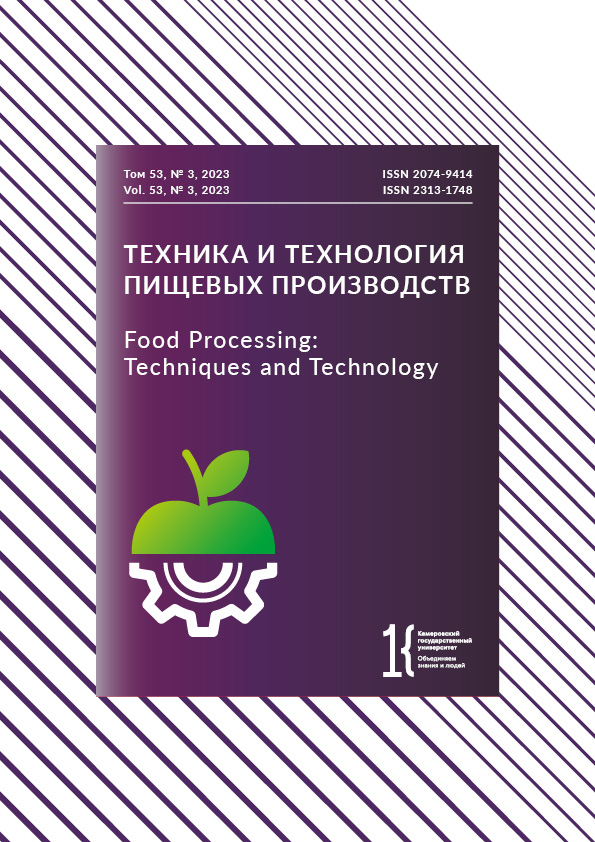Краснообск, Россия
Краснообск, Новосибирская область, Россия
Краснообск, Россия
Ягоды в питании человека рассматриваются как источник биологически активных веществ. Ягоды крыжовника обладают оригинальными органолептическими характеристиками и высокой пищевой ценностью. Однако информации о контаминации микромицетами ягод крыжовника недостаточно. Цель работы – определение состава микобиоты ягод крыжовника вида Ribes uva-crispa L. и его изменение в зависимости от сорта и условий хранения. Объект исследования – микобиота ягод крыжовника сортов Сенатор и Розовый 2. Ягоды собрали на биополигоне Сибирского федерального научного центра агробиотехнологий Российской академии наук, хранили в течение 18 суток при температуре 18 ± 2 и 4 ± 2 °С и относительной влажности воздуха 90–95 %. Методы исследования – общепринятые и стандартные. В микобиоте исследуемых сортов ягод крыжовника выявили микромицеты, отнесенные по морфологическому строению к 9 родам, частота встречаемости которых менялась от 20 до 100 % (Aspergillus, Mucor, Penicillium, Rhizopus, Alternaria, Aureobasidium, Cladosporium, Cryptococcus и анаэробные дрожжи). Микромицеты рода Fusarium выявили только в микобиоте ягод сорта Сенатор. Особенностью микобиоты ягод сорта Сенатор являлась 100 %-ая встречаемость грибов родов Penicillium, Alternaria, Aspergillus и Cladosporium, в микобиоте ягод сорта Розовый 2 отметили 80 %-ую встречаемость Penicillium и Cladosporium. Численность микромицетов ягод сорта Сенатор была в 2 раза меньше, чем ягод сорта Розовый 2, – 558 и 945 соответственно. Увеличение численности микромицетов ягод сорта Сенатор происходило за счет грибов рода Cladosporium, Розовый 2 – Penicillium. В микобиоте обоих сортов ягод не выявили возбудителей мучнистой росы – аскомицетов. В процессе хранения на развитие дрожжей и дрожжеподобных грибов влиял сорт ягод, на развитие мицелиальных грибов – сорт и температура хранения. Полученные данные расширяют объем научных знаний о родовом составе микобиоты ягод крыжовника, что определяет выбор мероприятий, обеспечивающих предотвращение их порчи.
Ribes uva-crispa L., ягода, сорт, микобиота, плесневые грибы, дрожжи, микробиота, хранение
1. Akimov MYu. New breeding and technological evaluation criteria for fruit and berry products for the healthy and dietary food industry. Problems of Nutrition. 2020;89(4):244–254. (In Russ.). https://doi.org/10.24411/0042-8833-2020-10057; https://www.elibrary.ru/ZDWZMY
2. Newman G. Fruit and vegetables: Prevention and cure? In: Short E, editor. A prescription for healthy living. A guide to lifestyle medicine. Academic Press; 2021. pp. 243–253. https://doi.org/10.1016/B978-0-12-821573-9.00022-9
3. Yahia EM, Fonseca JM, Kitinoja L. Postharvest losses and waste. In: Yahia EM, editor. Postharvest technology of perishable horticultural commodities. Woodhead Publishing; 2019. pp. 43–69. https://doi.org/10.1016/B978-0-12-813276-0.00002-X
4. Sedova IB, Chalyy ZA, Efimochkina NR, Sokolov IE, Koltsov VA, Zhidekhina TV, et al. Mycotoxin contamination of fresh berries and fruits marketed in the central region of Russia. Health Risk Analysis. 2022;(4):87–99. (In Russ.). https://doi.org/10.21668/health.risk/2022.4.08; https://www.elibrary.ru/TBZOVR
5. Ngolong Ngea GL, Qian X, Yang Q, Dhanasekaran S, Ianiri G, Ballester A-R, et al. Securing fruit production: Opportunities from the elucidation of the molecular mechanisms of postharvest fungal infections. Comprehensive Reviews in Food Science and Food Safety. 2021;20(3):2508–2533. https://doi.org/10.1111/1541-4337.12729
6. Zhang H, Boateng NAS, Ngolong Ngea GL, Shi Y, Lin H, Yang Q, et al. Unravelling the fruit microbiome: The key for developing effective biological control strategies for postharvest diseases. Comprehensive Reviews in Food Science and Food Safety. 2021;20(5):4906–4930. https://doi.org/10.1111/1541-4337.12783
7. Balali GI, Yar DD, Dela VGA, Adjei-Kusi P. Microbial contamination, an increasing threat to the consumption of fresh fruits and vegetables in today’s world. International Journal of Microbiology. 2020;2020:3029295. https://doi.org/10.1155/2020/3029295
8. Mendes RJ, Sario S, Luz JP, Tassi N, Teixeira C, Gomes P, et al. Evaluation of three antimicrobial peptides mixtures to control the phytopathogen responsible for fire blight disease. Plants. 2021;10(12):2637. https://doi.org/10.3390/plants10122637
9. Çağlayan K, Roumi V, Gazel M, Elçi E, Acioğlu M, Mavric Plesko I, et al. Identification and characterization of a novel Robigovirus species from sweet cherry in Turkey. Pathogens. 2019;8(2):57. https://doi.org/10.3390/pathogens8020057
10. Razo Sh, Panferov VG, Safenkova IV, Drenova NV, Varitsev YuA, Zherdev AV, et al. Development of an immunochromatographic test system with nanozyme amplification for detecting the phytopathogen Erwinia amylovora. Achievements of Science and Technology in Agro-Industrial Complex. 2022;36(1):34–39. (In Russ.). https://doi.org/10.53859/02352451_2022_36_1_34; https://www.elibrary.ru/JHIGCR
11. Oliveira M, Rodrigues CM, Teixeira P. Microbiological quality of raw berries and their products: A focus on foodborne pathogens. Heliyon, 2019;5(12):e02992. https://doi.org/10.1016/j.heliyon.2019.e02992
12. Gomzhina MM, Gasich EL, Gagkaeva TYu, Gannibal PhB. Biodiversity of fungi inhabiting blueberry growing in North-West Russia and Finland. Mycology and Phytopathology. 2021;55(5):353–370. (In Russ.). https://doi.org/10.31857/S0026364821050056; https://www.elibrary.ru/NMBBZV
13. Bano A, Gupta A, Prusty MR, Kumar M. Elicitation of fruit fungi infection and its protective response to improve the postharvest quality of fruits. Stresses. 2023;3(1):231–255. https://doi.org/10.3390/stresses3010018
14. Petrasch S, Silva CJ, Mesquida-Pesci SD, Gallegos K, van den Abeele C, Papin V, et al. Infection strategies deployed by Botrytis cinerea, Fusarium acuminatum, and Rhizopus stolonifer as a function of tomato fruit ripening stage. Frontiers in Plant Science. 2019;10:223. https://doi.org/10.3389/fpls.2019.00223
15. Kłapeć T, Wócik-Fatla A, Farian E, Kowalczyk K, Cholewa G, Cholewa A, et al. Mycobiota of berry fruits – levels of filamentous fungi and mycotoxins, composition of fungi, and analysis of potential health risk for consumers. Annals of Agricultural and Environmental Medicine. 2022;29(1):28–37. https://doi.org/10.26444/aaem/147297
16. Ráduly Z, Szabó L, Madar A, Pócsi I, Csernoch L. Toxicological and medical aspects of Aspergillus-derived mycotoxins entering the feed and food chain. Frontiers in Microbiology. 2020;10:2908. https://doi.org/10.3389/fmicb.2019.02908
17. Wu Y, Yin C, Huang R, He M, Duan X, Jiang Y, et al. Enhanced resistance in “shatang” mandarin fruit against Penicillium italicum caused by 2-methoxy-1, 4-naphthoquinone. Physiological and Molecular Plant Pathology. 2022;119:101828. https://doi.org/10.1016/j.pmpp.2022.101828
18. Aitymbet Zh, Urmanov GA, Sypabekkyzy G, Rakhimova EV. Species composition of the mycobiota of the Sievers apple tree (Malus sieversii (Ledeb) M. Roem.) in Kazakhstan. Problems of Botany of South Siberia and Mongolia. 2021;(20–1):17–22. (In Russ.). https://doi.org/10.14258/pbssm.2021003; https://www.elibrary.ru/QAALRA
19. Vybornova MV, Polunina TS, Lavrinova VA. Micobiota of currant berries. Proceedings of the North Caucasus Federal Scientific Center for Horticulture, Viticulture, and Winemaking. 2020;29:122–126. (In Russ.). https://doi.org/10.30679/2587-9847-2020-29-122-126; https://www.elibrary.ru/FYWMIE
20. Gómez-Albarrán C, Melguizo C, Patiño B, Vázquez C, Gil-Serna J. Diversity of mycobiota in spanish grape berries and selection of Hanseniaspora uvarum U1 to prevent mycotoxin contamination. Toxins. 2021;13(9):649. https://doi.org/10.3390/toxins13090649
21. Zhidekhina TV, Lavrinova VA, Polunina TS. Mycological profiling of raspberry cultivars in storage. Horticulture and Viticulture. 2020;(6):40–45. (In Russ.). https://doi.org/10.31676/0235-2591-2020-6-40-45; https://www.elibrary.ru/LFIYKW
22. Rodrigues P, Driss JO, Gomes-Laranjo J, Sampaio A. Impact of cultivar, processing and storage on the mycobiota of European chestnut fruits. Agriculture. 2022;12(11):1930. https://doi.org/10.3390/agriculture12111930
23. Hussein MA, El-Said AHM, Yassein AS. Mycobiota associated with strawberry fruits, their mycotoxin potential and pectinase activity. Mycology. 2020;11(2):158–166. https://doi.org/10.1080/21501203.2020.1759719
24. Quaglia M, Santinelli M, Sulyok M, Onofri A, Covarelli L, Beccari G. Aspergillus, Penicillium and Cladosporium species associated with dried date fruits collected in the Perugia (Umbria, Central Italy) market. International Journal of Food Microbiology. 2020;322:108585. https://doi.org/10.1016/j.ijfoodmicro.2020.108585
25. Akimov MYu, Bessonov VV, Kodentsova VM, Eller KI, Vrzhesinskaya OA, Beketova NA, et al. Biological value of fruits and berries of Russian production. Problems of Nutrition. 2020;89(4):220–232. (In Russ.). https://doi.org/10.24411/0042-8833-2020-10055; https://www.elibrary.ru/UOAQLM
26. Erbil N, Murathan Z, Arslan M, İlçim A. Comparison of some biochemical content and biological activities of gooseberry (Ribes uva-crispa L.) and alpine currant (Ribes alpinum L.). Adnan Menderes Üniversitesi Ziraat Fakültesi Dergisi. 2021;18(2):197–203. (In Turkish). https://doi.org/10.25308/aduziraat.907968
27. Orsavová О, Hlaváčová I, Mlček J, Snopek L, Mišurcová L. Contribution of phenolic compounds, ascorbic acid and vitamin E to antioxidant activity of currant (Ribes L.) and gooseberry (Ribes uva-crispa L.) fruits. Food Chemistry. 2019;284:323–333. https://doi.org/10.1016/j.foodchem.2019.01.072
28. Maslov AV, Mingaleeva ZSh, Yamashev TA, Shibaeva NF. Effect of a complex plant additive on flour mixes and wheat dough. Food Processing: Techniques and Technology. 2022;52(3):511–525. (In Russ.). https://doi.org/10.21603/2074-9414-2022-3-2385; https://www.elibrary.ru/UBJCWH
29. Качественные характеристики пастилы на основе пюре из крыжовника / Н. В. Мотовилова [и др.] // Технология и товароведение инновационных пищевых продуктов. 2022. Т. 74. № 3. С. 93–99. https://www.elibrary.ru/VEOGXN
30. Limonnikova SG, Velichko NA. Development of new types of preserves with gooseberry sauce. Bulletin of KSAU. 2021;169(4):127–132. (In Russ.). https://doi.org/10.36718/1819-4036-2021-4-127-132; https://www.elibrary.ru/ULIKHT
31. Magomedov RK. Disinfection of berries. Proceedings of the Kuban State Agrarian University. 2021;92:148–152. (In Russ.). https://doi.org/10.21515/1999-1703-91-148-152; https://www.elibrary.ru/QULTGQ
32. Просеков А. Ю., Голубцова Ю. В. Диагностика плодово-ягодного сырья с помощью ДНК-тест-систем // Хранение и переработка сельхозсырья. 2019. № 1. С. 98–105. https://www.elibrary.ru/IZBXLS
33. Panstruga R, Kuhn H. Mutual interplay between phytopathogenic powdery mildew fungi and other microorganisms. Molecular Plant Pathology. 2018;20(4):463–470. https://doi.org/10.1111/mpp.12771
34. Билай В. И., Коваль Э. З. Аспергиллы. К.: Наукова думка, 1988. 204 с.
35. Егорова Л. Н. Почвенные грибы Дальнего Востока: Гифомициты. Л.: Наука, 1986. 191 с.
36. Пидопличко Н. М. Пенициллин: (ключи для определения видов). К.: Наукова думка, 1972. 150 с.
37. Саттон Д., Фотергилл А., Ринальди М. Определитель патогенных и условно патогенных грибов. М.: Мир, 2001. 468 с.
38. Билай В. И. Методы экспериментальной микологии. К.: Наукова думка, 1982. 550 с.
39. Мирчинк Т. Г., Озерская С. М., Марфенина О. Е. Выявление комплексов микроскопических почвенных грибов по их структуре // Биологические науки. 1982. № 1. С. 61–69.
40. Чекрыга Г. П., Мотовилов К. Я. Микобиота продуктов пчеловодства // Микология и фитопатология. 2011. Т. 45. № 2. С. 158–163. https://www.elibrary.ru/NWYLCR
41. Сорокин О. Д. Прикладная статистика на компьютере. Краснообск: ГУП РПО СО РАСХН, 2004. 162 с.











